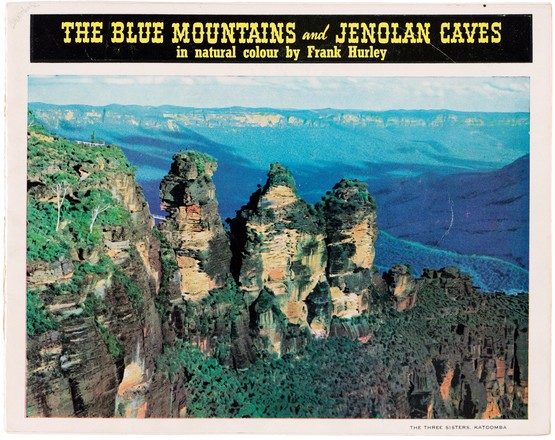
The Blue Mountains and Jenolan Caves in natural colour
1952
981.5/H
Publication
981.5/H
Publication
This iconic photograph of Katoomba’s most famous landmark, The Three Sisters was captured by the highly acclaimed Australian photographer and film maker Frank Hurley (1885 – 1962.) The image probably first appeared in a seven piece series Hurley produced in 1952 for Angus & Robertson entitled The Blue Mountains and Jenolan Caves: a camera study. Hurley also supplied this image to stationary magnate John Sands to feature in an annual calendar promoting well-known Australian landscapes.
The Three Sisters is one of the Blue Mountains most spectacular sites. The unusual rock formation comprises of three soft sandstone cliffs that tower over the Jamison Valley. Throughout the day, the rock’s nubbly surfaces reflect different colours, ranging from pale earthy tones, to rich reds and ambers. It is believed that these cliffs that stand up to 922 metres high are the result of the land erosion that has occurred over time.
According to various Aboriginal legends, the Three Sisters were created by a witch doctor who transformed his three beautiful daughters 'Meehni', 'Wimlah' and Gunnedoo' to stone to preserve their beauty and protect them from evil forces. In honour of these Indigenous stories, the site has adopted the name ‘The Three Sisters.’


 Back to list
Back to list